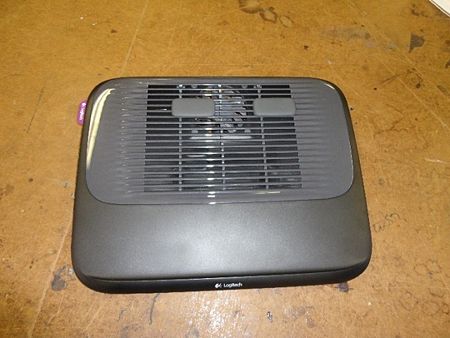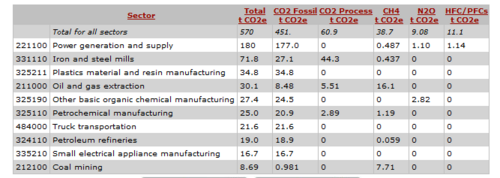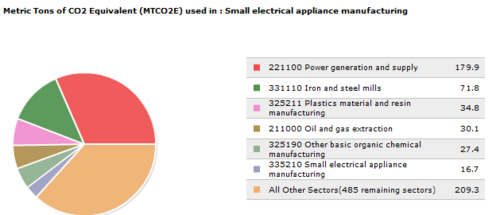Laptop chill pad
From DDL Wiki
Contents |
Executive Summary
We have completed a preliminary design study of the Logitech Cooling Pad N200. Initially, group discussions included problems with the existing model as well as possible and feasible improvements. With these in mind, we conducted a product dissection study. Our analysis of the design consisted of four approaches: design for manufacturing, design for assembly, failure modes and effects, and design for environment.
After conducting the design analysis for manufacturing and assembly, we can conclude that in the most part, the product has been designed for efficient manufacturing and assembly. Few possible design improvements linger, but determining their actual effectiveness will require further study on product use and specific manufacturing and assembly methods.
still need to talk about FMEA, DFE, and include short conclusion
Stakeholders Information
There are four stake holders for the chill pad: the customer, the retailer, the manufacturer, and the shipper.
Customer
The primary consumers for chill pads are users who intensively use their laptops such as gamers and most college students. College students are much more likely to have laptop computers and laptops typically overheat when the user is playing games. Because the chill pad would be used mostly in dormitory settings, portability is not a main priority. Rather, durability and effectiveness are more important for the target consumer. Customer Needs:
- Relatively cheap- under $50
- Life span- 3-4 years
- Effective cooling
- Less noise than computer
- Multi-surface use
- Effective fan mobility/placement
- Portability (semi)
- Well designed
- Good ergonomics
- Easy powering option (usb or battery or plug in wall)
- Adjustable power settings
- Low weight
- Adaptability to laptop size
- Manageable Size
Retailer
The primary retailers are those who directly sell the product to consumers, varying from electronic stores to online retailers. They can be identified as stores that primarily sell technology-related products. These stores would prefer a slick design as well as product performance to attract younger, more tech savvy consumers. Retailer Needs:
- Good presentation
- Outstanding performance
- Good yet cheap material
- Less custom parts
- Standardization
- Easy to replace parts
Manufacturer
Manufacturers are responsible for mass production of products. Therefore they would value low production costs.This means lower costs for raw materials, simple assembly, among others. Manufacturer Needs:
- Low production cost
- Fewer parts
- Parts with simple molds
- Less materials
- Common materials
- Cheap materials
- Easy to work with materials
- Low assembly time
Shipper
Shipping/transport stakeholders are primarily commercial delivery companies. They would benefit from lighter, easily packaged products, and small manageable packages. Shipper Needs:
- Durable product
- Small and durable packaging
- Low weight
Usage
Different chill pads have variations in its use. However the basic steps are as follows:
1. Place laptop onto chill pad
2. Attach power input to chill pad
3. Turn on chill pad
Three laptop chill pads were assessed for use:
1. Logitech - N200 Laptop Cooling Pad
2. Targus Chill Mat
3. Coldplayer
DFMA
Design for Manufacturing
The competitor’s product has been designed well with respect to manufacturability. The product has a low complexity as well as a part count that matches the level of complexity, as it has a good number of parts for its complexity. The most number of parts comes from the number of screws. Although could be lowered by changing from screws to a molded in, snap-fit feature, the screws allows for the part to be assembled easier, have an option to later open the part without breaking it, and keeps the mold simpler and cheaper.
Design for Assembly
Although the design for assembly can be improved on, most aspects of the design have been optimized to enable an easy, cheap assembly process. As for major improvements, the fan containment shell could be joined with the bottom body piece as one piece. There could be certain problems regarding the manufacturing process, but it would improve the design for assembly. In addition, the fan and shell casing components could be a subassembly that could be manufactured separately. The Logitech logo piece is unnecessary and just adds to the complexity of the assembly. Lastly, joining the felt to the bottom piece provides an assembly complexity as it may require multiple assembly directions or manual assembly. As for minor improvements, screws could be replaced with snap-fit designs and the screws necessary could be standardized. As for the current design, the elastic spacers between two parts are a useful inclusion for variable manufacturing tolerances. Another noteworthy design decision was the fan subassembly. The fan component consisted of a magnet, and it rested over the copper coils, which enables easy assembly without rotating shafts and additional components while being an effective motor. The general assembly process seems unambiguous and the assembly surfaces are kept to a decent minimum.
Design for Assembly: Pros
- Assembly directionality is mostly unambiguous and simple
- Fan subassembly is designed to function without rotating shaft
- Elastic spacers are used to fit pieces with variable manufacturing tolerances
Design for Assembly: Cons
- Fan and casing could be subassembly
- Rubber Logitech piece is unnecessary and just adds to manufacturing and assembly complexity
- Attaching felt onto plastic piece provides assembly complexity
FMEA (Failure Mode and Effects Analysis)
Across the board, the detectability of failure modes for the device is very low, that is, anything that goes wrong with the device will be quickly and easily spotted by the user. The highest RPN value is associated with the mode of failure wherein the USB cord stops transmitting power due to damaged wires inside. This is a critical failure mode because it compromises the functionality of the whole device, the part is not easily replaceable, and USB wires are not typically very sturdy. To combat this potential failure, we propose a retractable USB cord, which would avoid situations where slack in the cord makes it susceptible to damage. Another major concern from the analysis above is the screws becoming loose with use over time. This can be easily repaired, and to make it even less of a concern, we could use screws which have common head sizes in the improved design iteration to allow for home repair.
Table
| Failure Modes and Effects Analysis - Laptop Chill Pad | |||||||||
|---|---|---|---|---|---|---|---|---|---|
| Items and Function | Failure Mode | Effects of Failure | Severity | Causes of Failure | Probability of Occurrence | Design Control | Detectability | RPN | Recommended Actions |
| Fan - cools laptop | Fan blades break off | Laptop heats up | 6 | Dent/Other Defect Causes Fan to Collide with Casing | 1 | Tolerance Testing on Fan/Casing | 3 | 18 | Keep Injection Mold Simple to Avoid Defects |
| Fan stops spinning | 7 | Fatigue, Loss of Power from Motor | 1 | Fatigue Testing of Fan | 1 | 7 | Choose Material to Meet Needs | ||
| USB - Provides Power | Disconnection | Loss of power to chill pad | 2 | Loose Port, Something Snags Cord | 7 | None | 1 | 14 | Entertain options for compact cord wrapping |
| Broken inner wires | Loss of functionality | 6 | Damage to cord | 2 | 3 | 36 | None (Out of Designer Control) | ||
| Bend on connector | Connector could break off inside laptop | 7 | Bumping Connector While Inside Port | 2 | 1 | 14 | |||
| Power diverted elsewhere | Lower performance of chill pad | 2 | Too Much Usage from Programs | 3 | 3 | 18 | Keep Software to Low Power Usage Specs | ||
| Casing - Protects fan | Fan blades break off | Laptop heats up | 6 | Dent/Other Defect Causes Fan to Collide with Casing | 1 | Tolerance Testing on Fan/Casing | 3 | 18 | Keep Injection Mold Simple to Avoid Defects |
| Motor - Drives Fan | Fatigue | Stops rotating fan | 6 | Electrical Problem, Demagnetization | 1 | Cyclic Testing of Motor | 3 | 18 | Entertain Different Motor Configurations |
| Air Intake - Allows Air to Enter Through Bottom | Allowance of More than Air to Get Through Fan | Lower fan performance, Possible damage fan | 3 | Over-sized openings | 3 | Testing with Dust/Debris Under Chill Pad | 2 | 18 | Reduce Hole Size |
| Mechanism Holding USB Cord Breaks | No convenient storage of for USB Cord | 3 | Broken(Yielded) Tabs | 3 | Cyclic testing of tabs | 2 | 18 | Retractable USB Cord | |
| Grill - Allows Air Through Top | Particles slipping through grill | Possible damage to fan | 3 | Over-sized openings, Damaged grill | 2 | Strength testing of grill | 2 | 12 | Change Angle of Grill, or Use Different Cooling Method |
| Screws - Holds Assembly Together | Loosening | Assembly falling apart | 4 | Overuse, Fatigue | 2 | Testing of regular use | 3 | 24 | None (Out of Designer Control) |
| Rubber stoppers - Stops the computer from slipping | Disconnects from grill | Laptop slips off chill pad | Put stronger grips on the rubber stopper | ||||||
| Rubber spacers - Pushes apart the top and bottom cover | Add more support to lessen the load on each spacer | ||||||||
Design for Environment
Production
Use
Bill of Materials
The chill pad consists of five simple components: top cover, bottom cover, air intake, grill, and fan subassembly. The assembly is fairly straight forward. There are 16 parts we identified in the assembly. It consists mostly of plastic parts which were manufactured using different molding methods. Several metal screws were used to attach the components together. There are electrical components in the assembly that we did not disassemble such as the motor, switch and the USB connector. In the table below, the parts we identified are listed along with their properties and functions.
List of Components
| Part Number | Part Name | Quantity | Weight (g) | Material | Manufacturing Process | Function | Part Image |
|---|---|---|---|---|---|---|---|
| 1 | Top Cover | 1 | Plastic | Molding | Connects to the top grill and bottom cover. Protects inner workings. | ||
| 2 | Top Grill | 1 | Plastic | Molding | Connects to the top cover. Protects the fan and allows fan blown air to go through. | ||
| 3 | Small Steel Screws | 5 | Steel | Molding | Connects the top cover to the bottom cover. | ||
| 4 | Rubber Screws | 4 | .25 | Rubber | Molding | Connects the fan assembly to the top cover. | |
| 5 | Fan Casing | 1 | 15 | Plastic | Molding | Connects to the top cover and the fan. | |
| 6 | Fan | 1 | 25 | Plastic | Molding | Spins and blows air through the grill. | |
| 7 | Motor | 1 | Copper, Plastic | Connects to the fan. Spins the fan. | |||
| 8 | Felt | 1 | 40 | Felt | Glued to the bottom cover. Provides soft interface between the user and product. | ||
| 9 | Bottom Cover | 1 | 186 | Plastic | Molding | Connects to the top cover and protects the inner workings. Provides a base for the product. | |
| 10 | Air Intake | 1 | 81 | Plastic | Molding | Connects to the bottom cover. Allows air to flow into the chillpad. | |
| 11 | Screws | 3 | Steel | Molding | Connects the air intake to the top cover. | ||
| 12 | Rubber Spacers | 4 | .25 each | Rubber | Molding | Pushes on the top and bottom cover to provide a space in between. | |
| 13 | Removable Rubber Stoppers | 2 | 12 each | Rubber | Molding | Connects to the top grill. Provides increased friction between the laptop and chillpad to keep it from moving. | |
| 14 | USB Connector | 1 | Steel | Stamped | Connects the chillpad to the computer to draw power. | ||
| 15 | Switch | 1 | Plastic, | Molding | Allows the user to control the fan speeds. | ||
| 16 | Wires | 1 | Plastic, Copper | Connects the motor to the switch and then to the USB Connector. |
Team Member Roles
Phase I Team Roles
- Team Leader - James Chon
- DFMA(Assembly) Leader - Jay Kim
- DFMA(Manufacturing) Leader - Mukul Bhatt
- DFE Leader - David Gregor
- FMEA Leader - Brenden Patch













